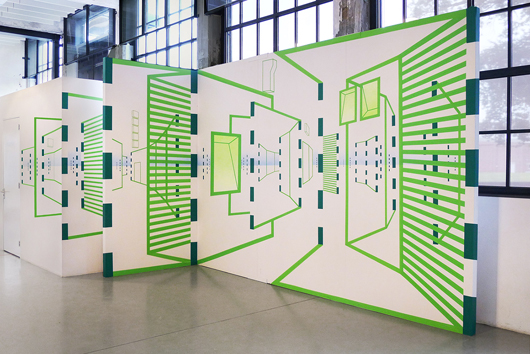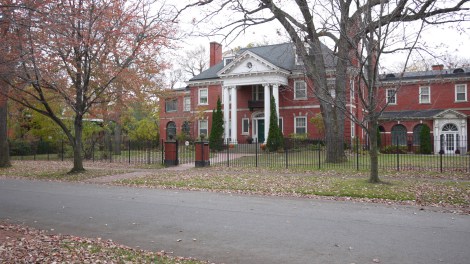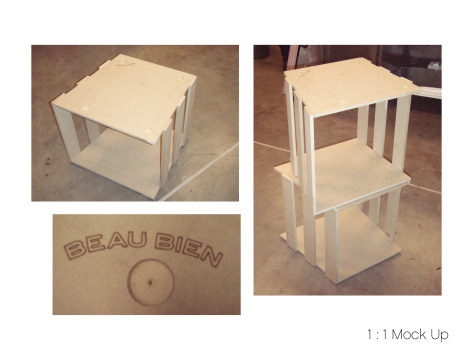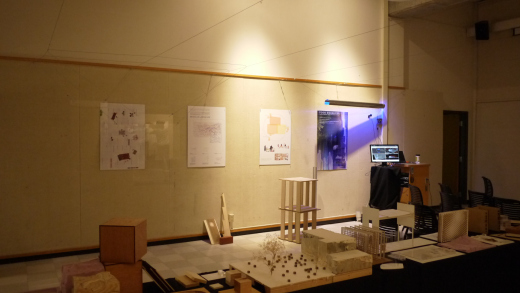Between the Lines…. with Damien Gilley

For those of us lucky enough to have encountered a visual arts, design or creativity-based education somewhere in our past, at one point, we, invariably, were exposed to the fundamentals of formal analysis—an effort to analyze formal aspects of a work of art by dissecting the artist’s efforts into elements and principles. It is a concept and a process that usually begins at the beginning: with a discussion of composition and the use of the simple line.
A line. It has the uncanny ability to take us from one place to another. It leads, we follow. It can be many things: thick, thin, horizontal, vertical, short, tall, diagonal. However, it is anything but basic. This extending mark or lingering stroke, stretching into space without much width to speak of, is the fundamental mark in all works of art. It defines, it divides, it embellishes, it conquers: it shows us the way. It can flow like a Rodin sketch, strut across a wheatfield with van Gogh precision, it can soar into the heights of a cathedral or flee into oblivion; it can provoke us Rising Down in a Mehretu. It is a shape that defies shape, a force not purely found in nature (a place that seems to have realized the value of mass and substance), and a definition of all things both real and imagined.
Into this linear exploration of the possibility of contour, comes Damien Gilley armed sometimes with only his ubiquitous roll of masking tape. Perhaps best described in his own words, Gilley is a multi-disciplinary artist and educator based in Portland, Oregon. And he makes use of the line. Sounds simple enough, doesn’t it? Hardly. Take a look.

His biography tells us his work has been exhibited nationally and internationally at venues including Tetem Kunstruimte (Enschede, Netherlands), EastWestProject (Berlin, DE), Las Vegas Art Museum, Arthouse (Austin), the Art Museum of South Texas (Corpus Christi), and in Portland at Rocksbox, Linfield College, Wieden+Kennedy, the American Institute of Architects, the Pacific Northwest College of Art, and the Portland 2010 Biennial, among others. Creating work with a global acceptance, Gilley is finding his method embraced by varying public and private entities.
His work has been reviewed by Artforum.com, the Oregonian, Willamette Week, Portland Mercury, Las Vegas Review Journal, the Austin Chronicle, drainmag.com, and was included recently in New American Paintings.
He has received multiple grants including a Project Grant from the Regional Arts & Culture Council and an Individual Artist Fellowship from the Oregon Arts Commission. He will have a solo exhibition in May at Suyama Space in Seattle, WA, and was awarded a residency at Bemis Center for Contemporary Art in Summer 2013. Lauded by state art agencies, he even got top-billing on the Oregon Arts Commission’s Facebook page—his work gracing the longitudinal and coveted cover image.
This winter term 2013 at the University of Oregon in Portland School of Architecture and Allied Arts, Damien Gilley joined us as an adjunct instructor for the Digital Arts Program. He is leading the pack of voracious fifth year BFA Digital Arts students in more ways than one: ambitiously planning student exhibitions in our White Stag Light Commons space, inviting special guest presentations and critiques to interact with his students, and planning future review sessions. He has taken to our space like a well-seasoned regular, utilizing the Output Room and radiating out his special brand of digitalesque-handmade work. And that is a key part of his intrigue—that unification of the digital with the hand-done. It might seem mystifying and slightly oxymoronic but it works in a very avant-garde, technology-based Portland-cum-DIY way. This year, in particular, his presence seems somewhat unstoppable. Get off a plane at the Portland International Airport, and winding your way through Concourse A, you get to pass Gilley’s latest in-the-public-eye installation. It is large and mesmerizing–blue masking tape spanning, reaching, breaching, transporting us away little by adhesive little. It is Gilley in his element—taking us places using technology and masking tape– and all we have to do is stand and stare and visually wander. Even when the tape begins to dry, the sticky-stuff harden and peel off the wall, Gilley delightfully accepts this as all part of the process–“that’s what happens,” he cheerfully insists, “that makes it handmade.” His philosophy on this merging of true high-tech and lowly rolls of hardware-store tape truly provides the cohesive core the medium (tape) might lack.

I asked Gilley to tell me about his practice, his process and his experience (or the experience he hopes to have here at the UO in Portland). And while I was fascinated by his recent installation at the Portland International Airport and the idea of masking tape (still absolutely captivated by the idea of masking tape….), this was to be a chance to let Gilley enlighten our left brain | right brain balance and give us a glimpse of how he is able to use a line in unexpected and unpredictable ways.
Gilley says,
My practice finds its home in a fine art context, creating installations and large-scale drawings in situ that challenge a viewer’s rational understanding of space. I use digital design programs to sketch and plan these experiential projects, ranging from Illustrator to Google SketchUp, which I utilized first as a graphic designer in Los Angeles a decade ago. Now I use these tools to produce work that references digital languages, but are ultimately executed by hand in materials that step away from digital processes, like masking tape for instance.

Regarding his work with the Digital Arts’ students:
I am excited to develop dialog with the students about the hybrid nature of art making today, especially in the context of a digital/physical relationship. I think it is critical as artists to continue to question processes of making and develop lateral thinking strategies that explore new methods of understanding our world. The students do not need to invent completely new processes necessarily, but instead find a personal relationship to their investigations of our contemporary, digital society. This leads to a variety of complex projects that explore unique approaches to making and alternative exhibition possibilities.
Being an artist who identifies with both traditional media and digital processes, I love the opportunity to contribute my conceptual interests in the field to the AAA dialogue. I feel programs that saturate themselves in the current digital reality have the most potential of new programs today, really digesting the contemporary landscape in a complex way that investigates visual, cultural, virtual, and interactive phenomena.
And what we have to look forward to this term:
The students will create new work for a midway exhibition in February in addition to the development of their thesis culmination in May. Throughout the term various artists will come share their work, in particular artists who traverse both contemporary art and design practices. These will be valuable interactions with active exhibiting artists. It is a great opportunity for intimate discussion and conversation about how to exhibit locally and nationally, what digital processes do for artwork today, and how the art and design worlds correlate.
Look at more of Gilley’s work here, Damien Gilley and Saatchi.
Read a Willamette Week review.
Look at the Merriam Webster Dictionary and Dictionary.com definition of LINE.
[Thanks, Damien! for the interview… -ss]









